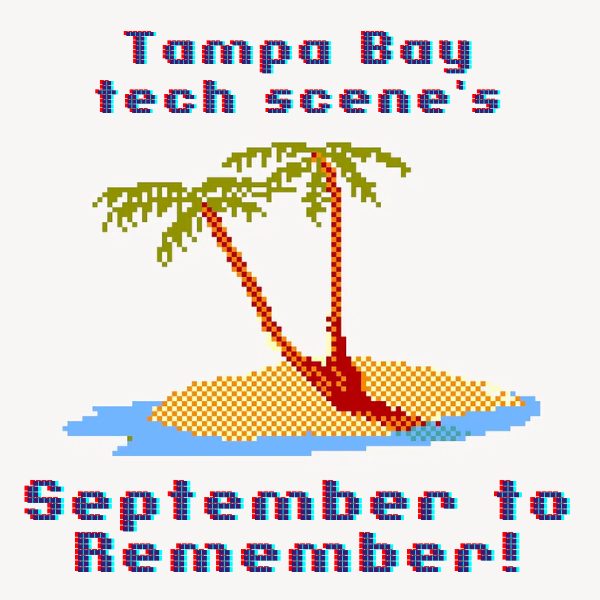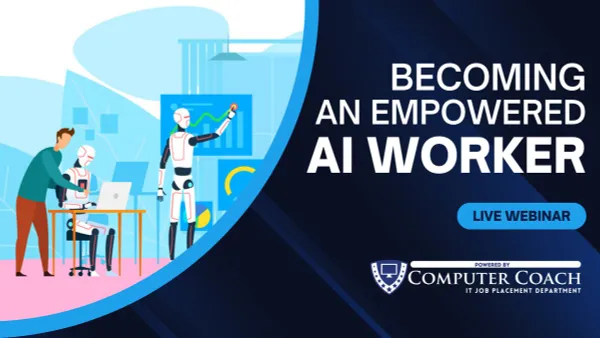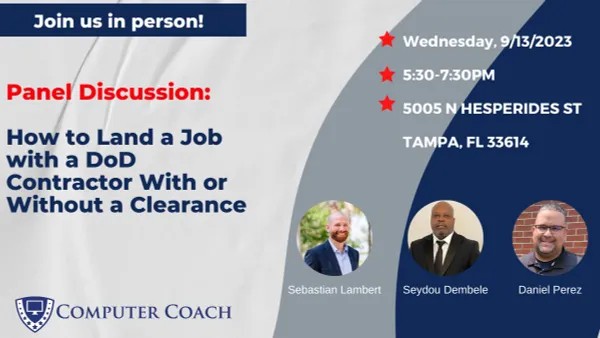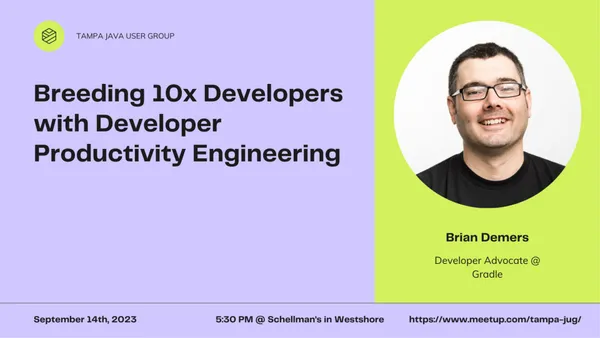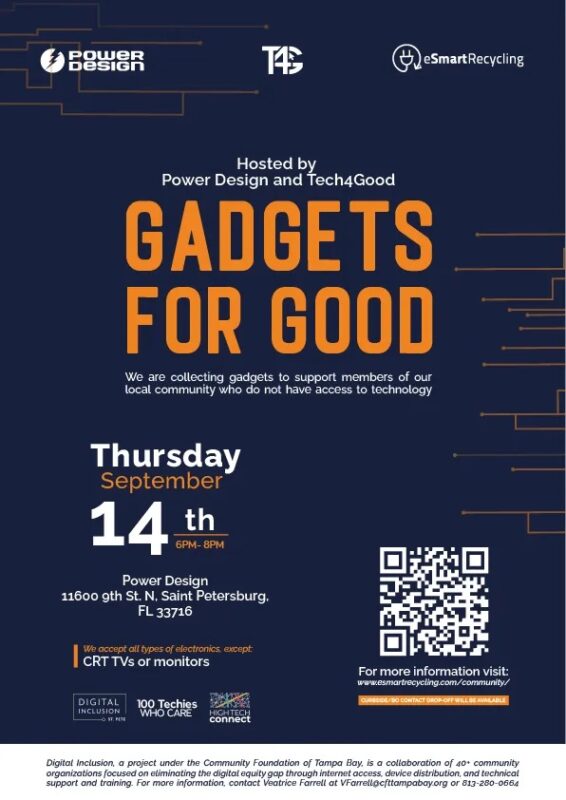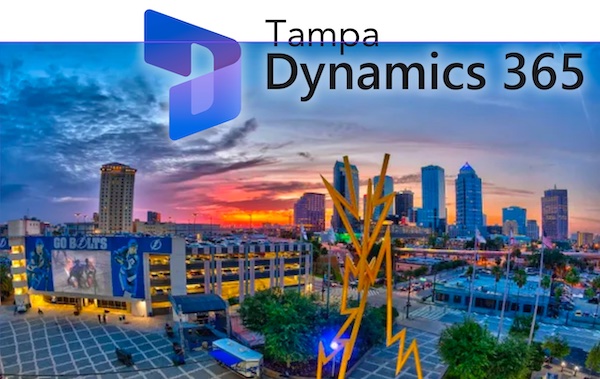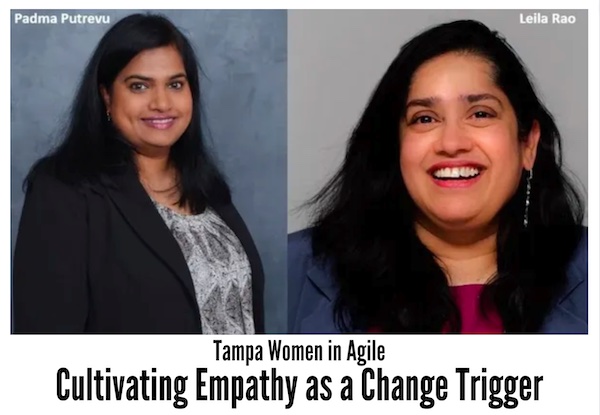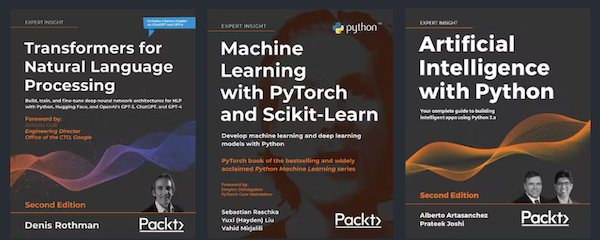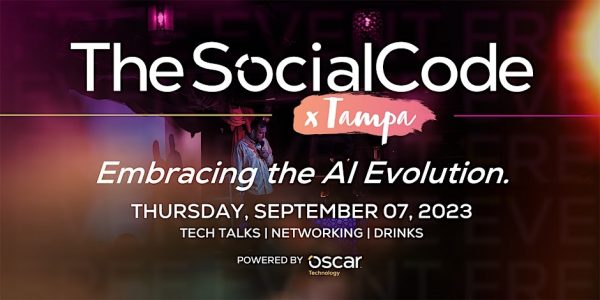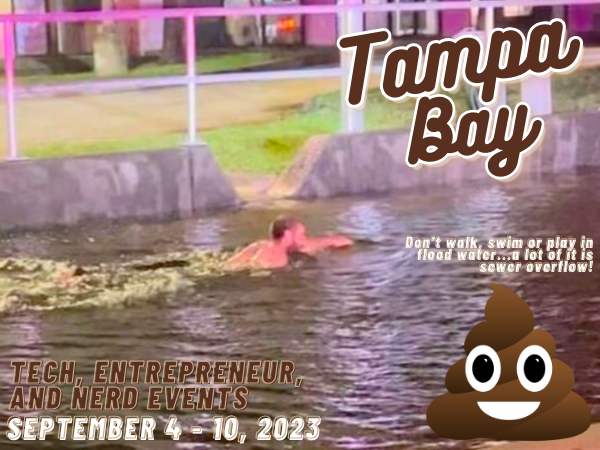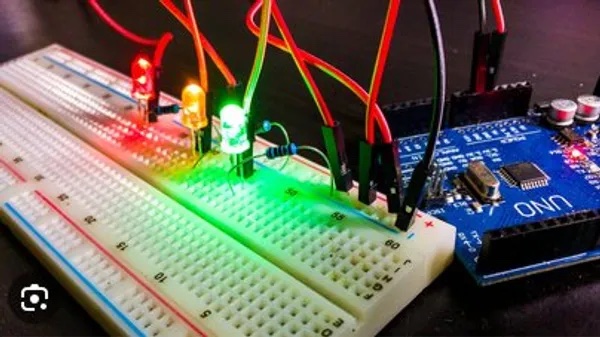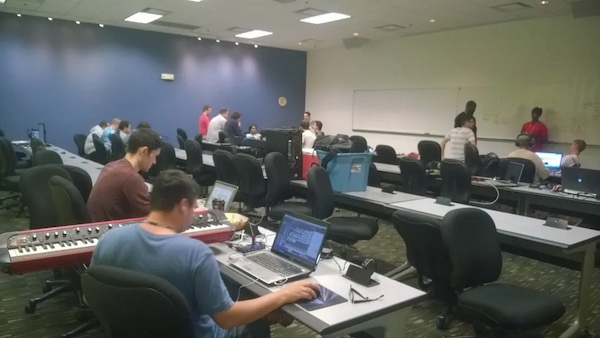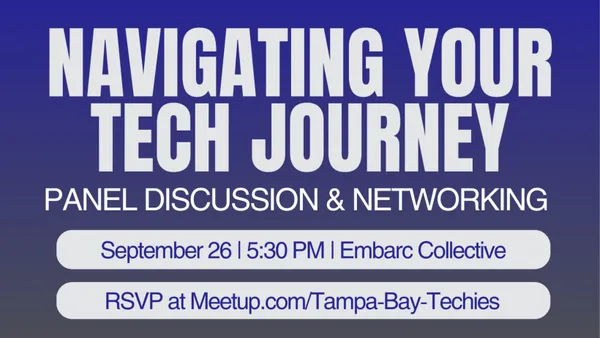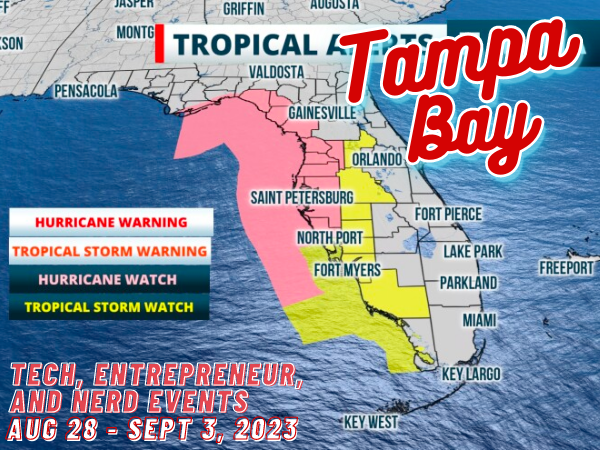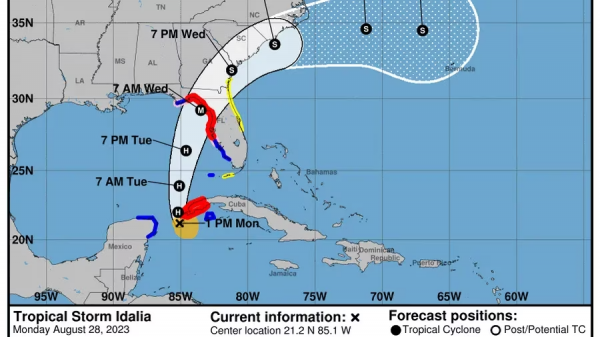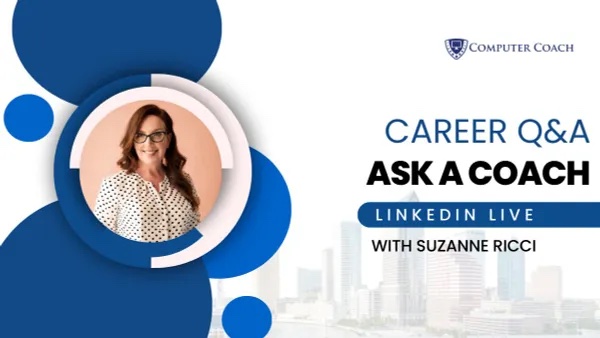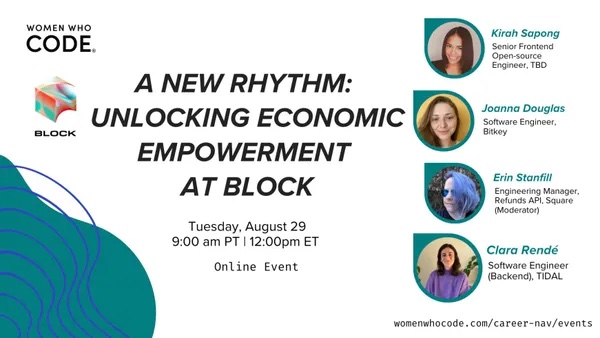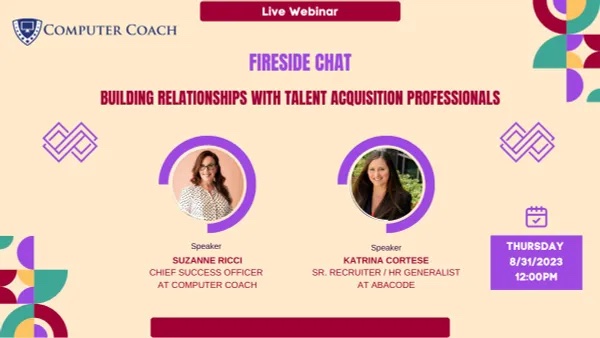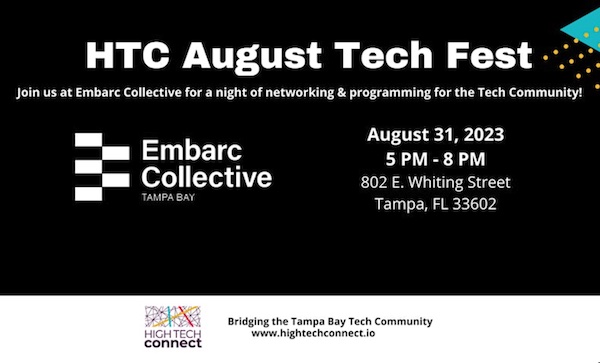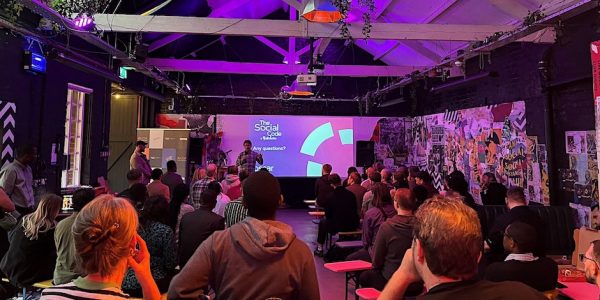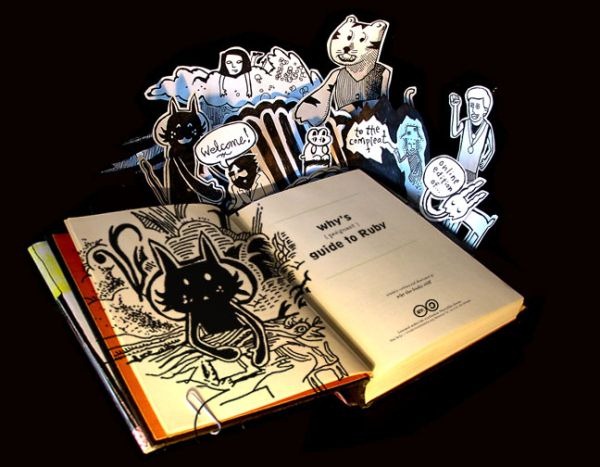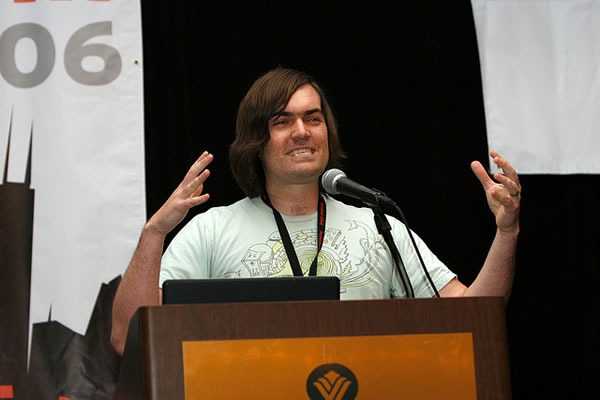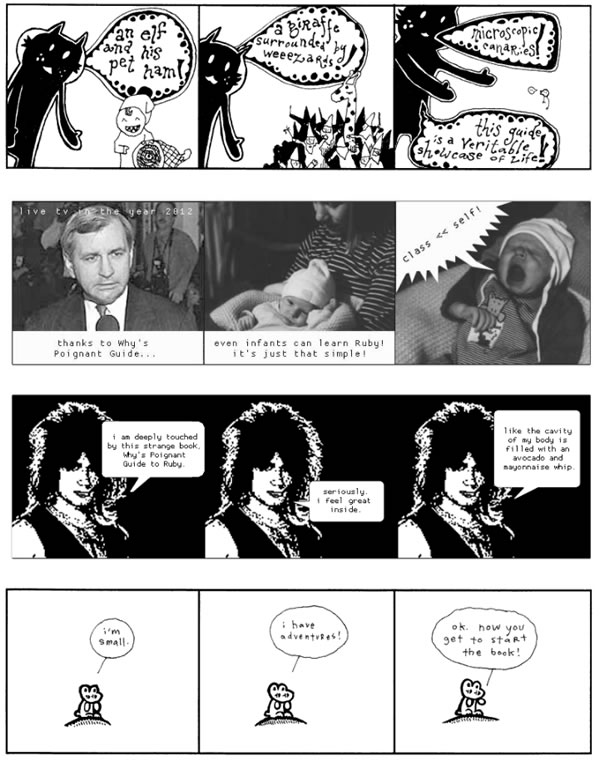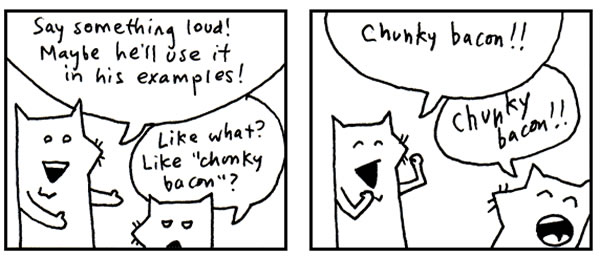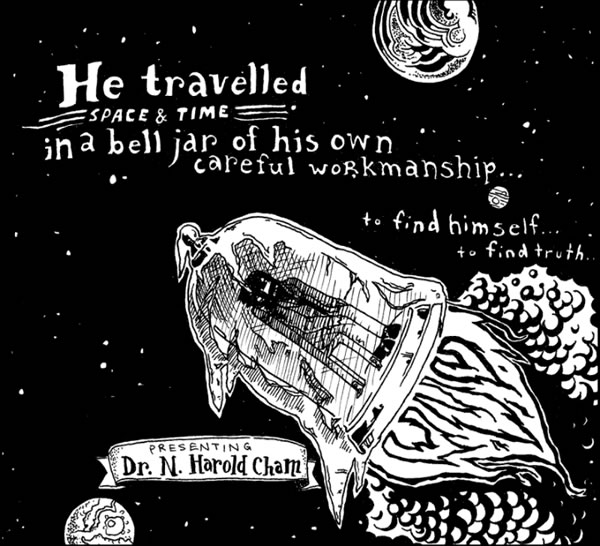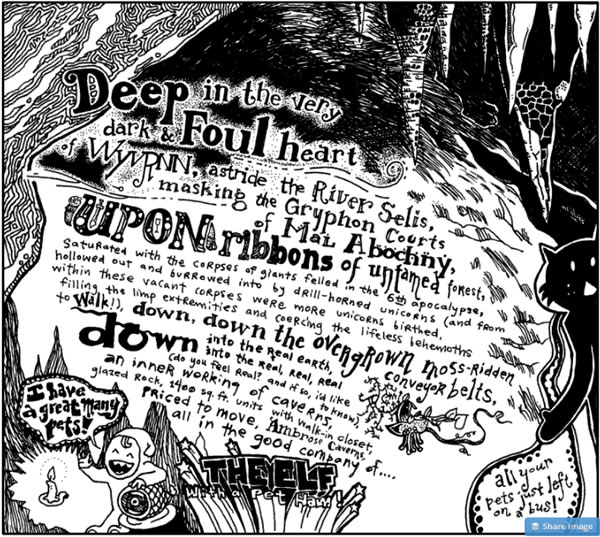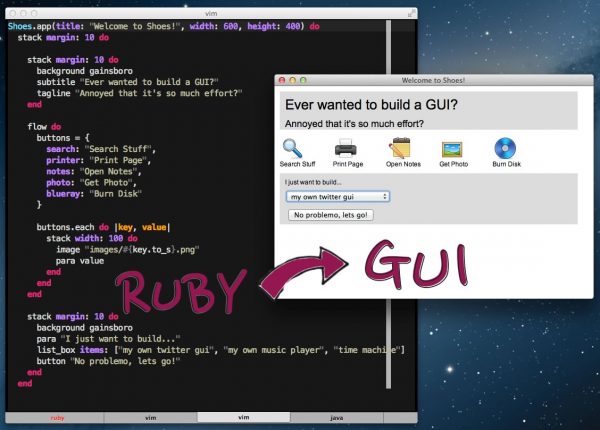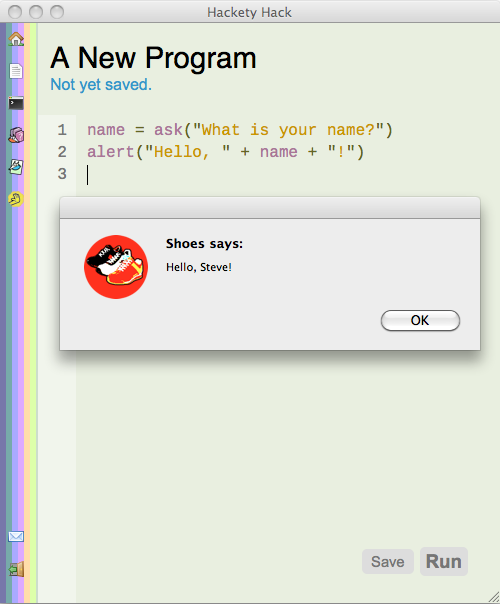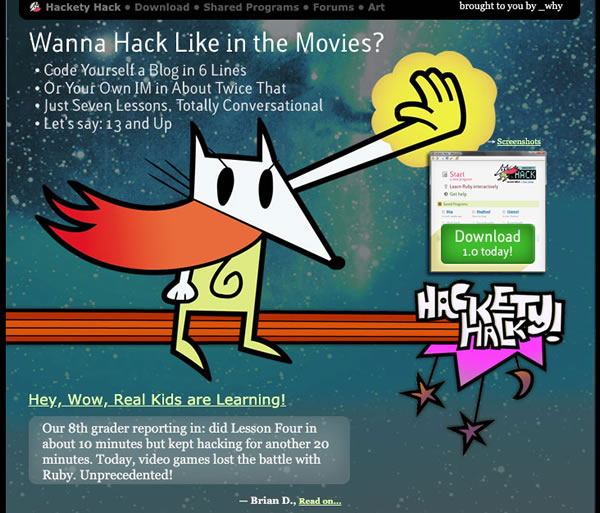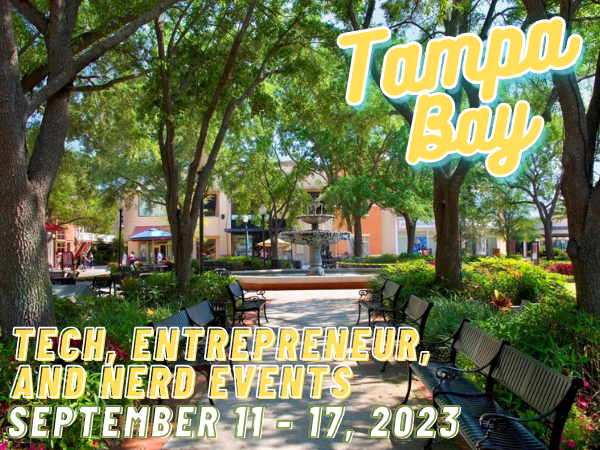
Here’s the “official unofficial” list of tech, entrepreneur, and nerd events for Tampa Bay and surrounding areas for the week of Monday, September 11 through Sunday, September 17, 2023.

they’re also a great, developer-friendly cloud-native service provider!
Find out more.
This will be the second full week of September, and the Tampa Bay tech community is having some big events this month:
| Event | Quick summary | When and where |
| BSides St. Pete | Deep cybersecurity knowledge will abound, with a full Friday of training sessions and a full Saturday devoted to a Black Hat-style conference. | Friday/Saturday Sept. 15 – 16 St. Petersburg College’s Seminole Campus |
| DevOpsDays Tampa Bay | A full-day conference dedicated to DevOps (“Dev” as in “software development,” “Ops” and in “IT operations”) in Tampa’s best conference venue. | Thursday, September 21 Armature Works |
| Navigating Your Tech Journey | An evening of tech career guidance (keynote and panel discussion) and networking at Tampa Bay’s premier tech gathering space. | Tuesday, September 26 Embarc Collective |
Want to find out more about what’s happening during the “September to Remember?” I spell it all out in this article.
This week’s events
- Monday, September 11
- Tuesday, September 12
- Wednesday, September 13
- Thursday, September 14
- Friday, September 15
- Saturday, September 16
- Sunday, September 17
Monday, September 11
On Monday evening, the Tampa Bay Apple Coding Meetup will get together to build a “soundboard” app that plays sounds when you press buttons. Now that Apple has outlawed fart apps, the only way you can get one is by writing your own — and you’ll learn how! Find out more and register here.
| Group | Event Name | Time |
|---|---|---|
| Young Professionals Networking JOIN in and Connect! • Saint Petersburg, FL | In person at Fords Garage St Pete | Mon, Sep 11 · 11:00 AM EDT |
| Tampa Bay Networking and Events • Largo, FL | Networking at Ford’s Garage | Mon, Sep 11 · 11:00 AM EDT |
| Tampa / St Pete Business Connections • Tampa, FL | Downtown St Pete Business Professionals Lunch | Mon, Sep 11 · 11:00 AM EDT |
| Option Trading Strategies (Tampa Bay area) Meetup Group • Tampa, FL | Option Trading Strategies Meetup (Online) | Mon, Sep 11 · 11:00 AM EDT |
| Young Professionals Networking JOIN in and Connect! • Saint Petersburg, FL | Start the Week with more connections MONDAYS at Romi’s Tacos All Welcome! | Mon, Sep 11 · 11:30 AM EDT |
| Tampa Bay Networking and Events • Largo, FL | Networking at Cafe’ Delanie | Mon, Sep 11 · 11:30 AM EDT |
| Christian Professionals Network Tampa Bay • Largo, FL | Business Networking Meeting | Mon, Sep 11 · 11:30 AM EDT |
| Tampa Bay Business Networking Meetings & Mixers • Tampa, FL | Monday Business Introductions at Romi’s Taco’s | Mon, Sep 11 · 11:30 AM EDT |
| Professional Business Networking with RGAnetwork.net • Tampa, FL | In PERSON Networking Lunch East Brandon Reserve your seat | Mon, Sep 11 · 11:30 AM EDT |
| Entrepreneurs & Startups – Bradenton Networking & Education • Bradenton, FL | Larry Rose: Replay Outreach | Mon, Sep 11 · 5:30 PM EDT |
| Toastmasters Division G • Ocala, FL | Radiant Ridge Toastmasters | Mon, Sep 11 · 5:30 PM EDT |
| Tampa Game Nights • Tampa, FL | Karaoke Night at Felicitous | Mon, Sep 11 · 5:30 PM EDT |
| Tampa Bay Apple Coding Meetup • Tampa, FL | Build an iOS Soundboard! | Mon, Sep 11 · 6:00 PM EDT |
| Win a Job Fast • Tampa, FL | Job Search Acceleration Group (JSAG) Workshop | Mon, Sep 11 · 6:00 PM EDT |
| Toastmasters District 48 • Saint Petersburg, FL | Speakeasy Toastmasters #4698 | Mon, Sep 11 · 6:00 PM EDT |
| Tampa Bay Tabletoppers • Tampa, FL | Monday Feast & Game Night | Mon, Sep 11 · 6:00 PM EDT |
| Sarasota Strategy Board Game League • Sarasota, FL | Blood Rage w/Promo Monsters – Monday September 11! | Mon, Sep 11 · 6:00 PM EDT |
| Critical Hit Games • Saint Petersburg, FL | MTG: Commander Night | Mon, Sep 11 · 6:00 PM EDT |
| Tampa Bay Gaming: RPG’s, Board Games & more! • Tampa, FL | Casual Pokemon League at Nerdy Needs | Mon, Sep 11 · 6:00 PM EDT |
| Board Game Meetup: Board Game Boxcar • Orlando, FL | Monday Weekly Board Game Night! (Lazy Moon Colonial Location) | Mon, Sep 11 · 6:00 PM EDT |
| Brews N Board Games • Orlando, FL | Board Game Night at Persimmon Hollow Flamingo Crossings | Mon, Sep 11 · 6:00 PM EDT |
| Tampa Hackerspace • Tampa, FL | Intro to the Babylock Embroidery Machine (Members Only) | Mon, Sep 11 · 6:30 PM EDT |
| Toastmasters District 48 • Saint Petersburg, FL | North Port Toastmasters Meets Online!! | Mon, Sep 11 · 6:30 PM EDT |
| Orlando Spades Meetup Group • Orlando, FL | Let’s Play Spades | Mon, Sep 11 · 6:30 PM EDT |
| Orlando Adventurer’s Guild • Orlando, FL | Tomb of Annhilation (APL 8 Forgotten Realms) – DM Carson | Mon, Sep 11 · 6:30 PM EDT |
| Shut Up & Write!® Orlando • Orlando, FL | Shut Up & Write!® Dr. Phillips/Orlando | Mon, Sep 11 · 6:30 PM EDT |
| Toastmasters District 48 • Saint Petersburg, FL | Stirling Toastmasters Club #7461614 | Mon, Sep 11 · 7:00 PM EDT |
| Shut Up & Write!® St. Petersburg • Saint Petersburg, FL | Online Event: Shut Up & Write!® Your Life Story (on Zoom) | Mon, Sep 11 · 7:00 PM EDT |
| Geekocracy! • Tampa, FL | Pool at Peabodys | Mon, Sep 11 · 7:30 PM EDT |
| Sunshine Games • Tampa, FL | DigiMondays | Mon, Sep 11 · 7:30 PM EDT |
| Beginning Web Development • Windermere, FL | Weekly Meetup | Mon, Sep 11 · 8:00 PM EDT |
| The Vantage Social and Creative Events • Palm Harbor, FL | Magic the Gathering Mondays @ The Vantage! | Mon, Sep 11 · 8:00 PM EDT |
| Bitcoiners of Southwest Florida • Fort Myers, FL | Where is Bitcoin Going? | Mon, Sep 11 · 9:00 PM EDT |
| Return to the top of the list | ||
Tuesday, September 12
On Tuesday morning, Computer Coach (by way of the Career Success Academy, Front End Creatives, Tampa Bay Agile, and Tampa Cybersecurity Training meetups) will hold an online meetup on becoming an empowered AI worker. Find out more and register here.
| Group | Event Name | Time |
|---|---|---|
| Toastmasters District 48 • Saint Petersburg, FL | Venice Area Toastmasters Club #5486 | Tue, Sep 12 · 7:30 AM EDT |
| Tampa Bay Agile • Tampa, FL | v-Lean Coffee | Tue, Sep 12 · 7:30 AM EDT |
| Front End Creatives • Tampa, FL | Becoming an Empowered AI Worker | Tue, Sep 12 · 10:00 AM EDT |
| Tampa Cybersecurity Training • Tampa, FL | Becoming an Empowered AI Worker | Tue, Sep 12 · 10:00 AM EDT |
| Tech Success Network • Tampa, FL | Becoming an Empowered AI Worker | Tue, Sep 12 · 10:00 AM EDT |
| Career Success Academy • Tampa, FL | Becoming an Empowered AI Worker | Tue, Sep 12 · 10:00 AM EDT |
| Business Professionals of Pinellas, Pasco & Hillsborough • Largo, FL | Tuesday Westchase Business Networking Lunch at Grand Hacienda | Tue, Sep 12 · 11:00 AM EDT |
| Young Professionals Networking JOIN in and Connect! • Saint Petersburg, FL | Westchase Professional Business Networking Lunch ~ All Welcome | Tue, Sep 12 · 11:00 AM EDT |
| Tampa Bay Networking and Events • Largo, FL | Networking at SeaGlass Tavern~ All Welcome, join us!!! | Tue, Sep 12 · 11:00 AM EDT |
| Hyperledger Tampa • Tampa, FL | Web3 Technologies Enabling New Enterprise & Government Solutions | Tue, Sep 12 · 11:00 AM EDT |
| Tampa / St Pete Business Connections • Tampa, FL | Westchase Business Networking Lunch ~ All Welcome JOIN us and connect! | Tue, Sep 12 · 11:00 AM EDT |
| Wesley Chapel, Trinity, New Tampa, Business Professionals • Wesley Chapel, FL | New Tampa Networking Lunch at Glory Day’s Grill New Tampa | Tue, Sep 12 · 11:30 AM EDT |
| Tampa Bay Networking and Events • Largo, FL | Networking at Glory Days Grill | Tue, Sep 12 · 11:30 AM EDT |
| Tampa Bay Networking and Events • Largo, FL | Networking at Italian Touch, St. Pete | Tue, Sep 12 · 11:30 AM EDT |
| Pasco County Young Entrepreneurs/Business Owners All Welcome • Wesley Chapel, FL | Professional Business Networking Lunch Glory Day’s New Tampa | Tue, Sep 12 · 11:30 AM EDT |
| Tampa Entrepreneurs Network • Tampa, FL | Hear People Say Yes To You More – Master The Art Of Persuasion And Influence | Tue, Sep 12 · 12:00 PM EDT |
| Deirdre A. McKay • Sarasota, FL | Creatives! How to Finish that Project. | Tue, Sep 12 · 1:00 PM EDT |
| Tampa Hackerspace • Tampa, FL | Weekly Open Make Night | Tue, Sep 12 · 6:00 PM EDT |
| Tampa Game Nights • Tampa, FL | Magic: The Gathering Night at Felicitous | Tue, Sep 12 · 6:00 PM EDT |
| Critical Hit Games • Saint Petersburg, FL | Hobby Night | Tue, Sep 12 · 6:00 PM EDT |
| Florida Center for Creative Photography • Saint Petersburg, FL | Meet & Greet at O’Keefe’s Family Restaurant | Tue, Sep 12 · 6:00 PM EDT |
| Young Entrepreneurs of America YEA Meetup Group • Tampa, FL | YEA Young Entrepreneur Meetup! Seminar & Networking | Tue, Sep 12 · 6:30 PM EDT |
| Tampa eMarketing Groups • Tampa, FL | Learn About Podcasting and How to Monetize Your Interest! | Tue, Sep 12 · 6:30 PM EDT |
| Florida Podcasters Association • Tampa, FL | Florida Podcasters Association General Meeting!!! | Tue, Sep 12 · 6:30 PM EDT |
| Oldsmar Reads Between The Lines • Oldsmar, FL | Book Club Meeting | Tue, Sep 12 · 6:30 PM EDT |
| Their Eyes Were Watching Books – Classic Book Meetup • Sarasota, FL | September Book Club | Tue, Sep 12 · 6:30 PM EDT |
| Pinellas Writers • Largo, FL | Weekly Group Meetings – All Writers Welcome! | Tue, Sep 12 · 6:30 PM EDT |
| Shut Up & Write!® Orlando • Orlando, FL | Shut Up & Write!® in Altamonte Springs/Lake Mary | Tue, Sep 12 · 6:30 PM EDT |
| Tampa Hackerspace • Tampa, FL | Woodshop Safety (Members Only) | Tue, Sep 12 · 7:00 PM EDT |
| Dunedin Toastmasters 2166 • Dunedin, FL | Dunedin Toastmasters – Guests Welcome! | Tue, Sep 12 · 7:00 PM EDT |
| The Orlando Python User Group • Orlando, FL | Pizza Python | Tue, Sep 12 · 7:00 PM EDT |
| Google Developer Group Central Florida • Orlando, FL | Road To DevFestFlorida: WebML, Flutter, and LLM integration | Tue, Sep 12 · 7:00 PM EDT |
| Kava Culture Clearwater • Clearwater, FL | Trivia Night | Tue, Sep 12 · 7:00 PM EDT |
| Sunshine Games • Tampa, FL | Yu-Gi-Oh Evening Tournament | Tue, Sep 12 · 7:00 PM EDT |
| Tampa Bay Gaming: RPG’s, Board Games & more! • Tampa, FL | D&D Adventurers League at Armada Games | Tue, Sep 12 · 7:00 PM EDT |
| St. Pete Beers ‘n Board Games for Young Adults • Saint Petersburg, FL | St. Pete Beers ‘n Board Games Meetup for Young Adults | Tue, Sep 12 · 7:00 PM EDT |
| Suncoast Gamers • Sarasota, FL | Dems with Dice | Tue, Sep 12 · 7:00 PM EDT |
| Central Florida Books and Brews • Kissimmee, FL | Let’s Meetup and Discuss “The Midnight Library” by Matt Haig | Tue, Sep 12 · 7:00 PM EDT |
| Shut Up & Write!® Tampa • Tampa, FL | Online Event: Shut Up & Write on Zoom | Tue, Sep 12 · 7:45 PM EDT |
| Bitcoiners of Southwest Florida • Fort Myers, FL | Trading Tuesday | Tue, Sep 12 · 8:00 PM EDT |
| Central Florida Trivia Lovers • Oviedo, FL | MUSIC BINGO at ISLAND WING COMPANY – UCF | Tue, Sep 12 · 8:00 PM EDT |
| Return to the top of the list | ||
Wednesday, September 13
On Wednesday evening, Computer Coach will host an in-person event where they’ll explain how to land a job with a Department of Defense contractor — whether you have a security clearance or not! Find out more and register here.
| Group | Event Name | Time |
|---|---|---|
| Young Professionals Networking JOIN in and Connect! • Saint Petersburg, FL | St Pete Networking Breakfast at the Hangar Meet St Pete’s Top Pro’s All Weclcome | Wed, Sep 13 · 7:30 AM EDT |
| Tampa Bay Networking and Events • Largo, FL | Networking at The Hanger Restaurant & Flight Lounge! | Wed, Sep 13 · 7:30 AM EDT |
| Network Professionals Inc. of South Pinellas (NPI) • Saint Petersburg, FL | NPI Profit Partners Chapter – Exchange Qualified Business Referrals | Wed, Sep 13 · 7:30 AM EDT |
| Toastmasters District 48 • Saint Petersburg, FL | Tampa Highrisers Toastmasters | Wed, Sep 13 · 7:45 AM EDT |
| 1 Million Cups – Orlando • Winter Park, FL | 1 Million Cups – Orlando Weekly Meetup | Wed, Sep 13 · 8:30 AM EDT |
| WordPress Orlando • Orlando, FL | Coffee & WordPress at Foxtail Coffee – Howell Branch | Wed, Sep 13 · 9:00 AM EDT |
| Suncoast Drone Club • Tampa, FL | Dunedin Youth Guild Park | Wed, Sep 13 · 9:00 AM EDT |
| Professional Business Networking with RGAnetwork.net • Tampa, FL | In Person Networking BRANDON! Just Love Coffee Cafe – Brandon FL | Wed, Sep 13 · 11:15 AM EDT |
| Tampa / St Pete Business Connections • Tampa, FL | Brandon Business Professionals IN Person!!!! | Wed, Sep 13 · 11:30 AM EDT |
| Young Professionals Networking JOIN in and Connect! • Saint Petersburg, FL | Brandon Business Professionals Just Love Coffee | Wed, Sep 13 · 11:30 AM EDT |
| Tampa Bay Networking and Events • Largo, FL | Networking at Just Love Coffee! | Wed, Sep 13 · 11:30 AM EDT |
| Tampa Bay Networking Meetings and Mixers • Tampa, FL | Carrollwood Networking Lunch! Join us and win! | Wed, Sep 13 · 11:30 AM EDT |
| Tampa Bay Networking and Events • Largo, FL | Networking at Glory Days Grill! | Wed, Sep 13 · 11:30 AM EDT |
| Tampa Bay Business Networking Meetings & Mixers • Tampa, FL | Brandon Networking Professionals Networking Lunch | Wed, Sep 13 · 11:30 AM EDT |
| Midjourney A.I. Art Meetup Group • Tampa, FL | Midjourney Prompt Help & Advanced FAQ with A.I. Creative Compass! | Wed, Sep 13 · 12:00 PM EDT |
| Hyperledger Tampa • Tampa, FL | Unleashing The Potential Of Tokenized Assets Via Public/Private Architecture | Wed, Sep 13 · 12:00 PM EDT |
| Tampa SEO & Internet Marketing Meetup with Steve Scott • Tampa, FL | Free Webinar: AI: Cool New Toy or Extinction Level Event on the Horizon? | Wed, Sep 13 · 12:00 PM EDT |
| Tampa Startup Founder 101 • Tampa, FL | Quickfire Pitching: Get Instant Feedback on Your Startup Idea | Wed, Sep 13 · 1:00 PM EDT |
| Florida Startup: Idea to IPO • Tampa, FL | Silicon Valley Business Networking (Online) | Wed, Sep 13 · 1:00 PM EDT |
| Shut Up & Write!® St. Petersburg • Saint Petersburg, FL | Online Event: Shut Up & Write!® Your Life Story (on Zoom) | Wed, Sep 13 · 1:00 PM EDT |
| The Movers and Shakers Collective of Central Florida • Orlando, FL | Mix, Mingle, & Mastermind | Wed, Sep 13 · 2:00 PM EDT |
| Central Florida CitySec • Orlando, FL | SwanCitySec Meetup | Wed, Sep 13 · 5:00 PM EDT |
| The Tampa Chapter of the Society for the Exploration of Play • Tampa, FL | Playing Games in the Alley | Wed, Sep 13 · 5:00 PM EDT |
| Brandon Boardgamers • Brandon, FL | Board Gaming – In Person | Wed, Sep 13 · 5:00 PM EDT |
| Bay Pines Toastmasters • Saint Petersburg, FL | Bay pines toastmaster’s hybrid meeting | Wed, Sep 13 · 5:15 PM EDT |
| Front End Creatives • Tampa, FL | How to Land a Job with a DoD Contractor with or without a Clearance | Wed, Sep 13 · 5:30 PM EDT |
| Tampa Cybersecurity Training • Tampa, FL | How to Land a Job with a DoD Contractor with or without a Clearance | Wed, Sep 13 · 5:30 PM EDT |
| Tech Success Network • Tampa, FL | How to Land a Job with a DoD Contractor with or without a Clearance | Wed, Sep 13 · 5:30 PM EDT |
| Career Success Academy • Tampa, FL | How to Land a Job with a DoD Contractor with or without a Clearance | Wed, Sep 13 · 5:30 PM EDT |
| Tampa Bay Gaming: RPG’s, Board Games & more! • Tampa, FL | Felicitous Game Night w/Heritage Dim Sum | Wed, Sep 13 · 5:30 PM EDT |
| Tampa Gaming Guild • Tampa, FL | Wednesday Board Game Night | Wed, Sep 13 · 5:30 PM EDT |
| Defcon813 • Tampa, FL | Whiskey Tech Wednesdays | Wed, Sep 13 · 6:00 PM EDT |
| Win a Job Fast • Tampa, FL | Job Search Acceleration Group (JSAG) Workshop | Wed, Sep 13 · 6:00 PM EDT |
| Sunshine Games • Tampa, FL | Casual Commander Wednesdays | Wed, Sep 13 · 6:00 PM EDT |
| Clermont Nerd Games • Clermont, FL | Dungeons & Dragons One Shot Wednesdays | Wed, Sep 13 · 6:00 PM EDT |
| Critical Hit Games • Saint Petersburg, FL | Board Game Night | Wed, Sep 13 · 6:00 PM EDT |
| Brews N Board Games • Orlando, FL | Board Game Night at Deadwords Brewing | Wed, Sep 13 · 6:00 PM EDT |
| Prose Society Writers’ Group • Saint Petersburg, FL | Monthly Meeting: How to Effectively Outline a Story (For a Killer First Draft) | Wed, Sep 13 · 6:00 PM EDT |
| Tampa Bay Inventors Council – www.TampaBayInventors.org • Largo, FL | Tampa Bay Inventors Council – www.tbic.us bi-monthly Meetup | Wed, Sep 13 · 6:30 PM EDT |
| Drunk’n Meeples the Social Tabletop (Board) Gamers • Palm Harbor, FL | Game Night! | Wed, Sep 13 · 6:30 PM EDT |
| The Weirder Things Book Club • Parrish, FL | Ghost Eaters-Clayton McLeod-midway | Wed, Sep 13 · 6:30 PM EDT |
| Tampa Writers Alliance • Tampa, FL | Tampa Writers Alliance Critique Group | Wed, Sep 13 · 6:30 PM EDT |
| Hyperledger Tampa • Tampa, FL | Learning Tokens @ Hyperledger Besu, 2nd. Public Session | Wed, Sep 13 · 7:00 PM EDT |
| Tampa Amazon Seller Meetup Group • Tampa, FL | Managing A White Hat Brand In A Black Hat World | Wed, Sep 13 · 7:00 PM EDT |
| Toastmasters District 48 • Saint Petersburg, FL | Carrollwood Toastmasters Meetings meet In-Person and Online | Wed, Sep 13 · 7:00 PM EDT |
| Broward Drupal Users Group • Boca Raton, FL | Call for presenters | Wed, Sep 13 · 7:00 PM EDT |
| MakerFX Makerspace • Orlando, FL | MakerFX Embrilliance Study Group | Wed, Sep 13 · 7:00 PM EDT |
| Castaways Euchre Club • Saint Petersburg, FL | Castaways Euchre Club | Wed, Sep 13 · 7:00 PM EDT |
| Adventures On Tap: TTRPGs and Board Games • Orlando, FL | Nerd Night: Board Games and Beer at Deadwords Brewing | Wed, Sep 13 · 7:00 PM EDT |
| Central Florida AD&D (1st ed.) Grognards Guild • Winter Park, FL | New Beginnings & Old Rivalries | Wed, Sep 13 · 7:00 PM EDT |
| Writers of Central Florida or Thereabouts • Winter Park, FL | The Short Attention Span Storytelling Hour | Wed, Sep 13 · 7:00 PM EDT |
| Nerdbrew Events • Tampa, FL | Songs & Soju | Karaoke & Party Games! | Wed, Sep 13 · 7:30 PM EDT |
| Florida AWS Security Users Meetup Group • Sarasota, FL | Security Chaos Engineering on AWS | Wed, Sep 13 · 8:00 PM EDT |
| Orlando Lady Developers Meetup • Orlando, FL | Code challenge Monthly coding session | Wed, Sep 13 · 8:00 PM EDT |
| Wednesday Night Gaming • Dunnellon, FL | Wednesday night game | Wed, Sep 13 · 8:00 PM EDT |
| Central Florida Trivia Lovers • Oviedo, FL | TRIVIA at ISLAND WING COMPANY – UCF | Wed, Sep 13 · 8:00 PM EDT |
| Return to the top of the list | ||

they’re also a great, developer-friendly cloud-native service provider!
Find out more.
Thursday, September 14
There’s a lot going on Thursday evening! At 5:30 in Tampa, the Tampa Java User Group session will be on how a dedicated Developer Productivity Engineering (DPE) organization can create 10x developers. Brian Demers, Developer Advocate at Gradle, will present. Find out more and register here.
Tech4Good Tampa will hold an in-person roundtable discussion on digital fundraising and leveraging AI. There’ll also be a device drive — bring your old, unused tech gadgets and they will be donated to the Pinellas ‘Digital Inclusion Program.’ Your donated devices/equipment will be cleaned and donated to those in our community in need. Find out more and register here.
The Tampa Dynamics 365 Meetup will host the discussion “The Future of AI in Dynamics and Power Platform,” where they’ll have a general conversation how to utilize the technology and where it is going in the Dynamics and Power Platform space. Find out more and register here.
Tampa Women in Agile will hold an online event featuring guest speakers Padma Putrevu and Leila Rao, as they share insights into the role of empathy and how it relates to Agilists. Find out more and register here.
| Group | Event Name | Time |
|---|---|---|
| Wesley Chapel, Trinity, New Tampa, Business Professionals • Wesley Chapel, FL | Business Over Breakfast ~ Happy Hangar IN PERSON JOIN US! | Thu, Sep 14 · 7:30 AM EDT |
| Pasco County Young Entrepreneurs/Business Owners All Welcome • Wesley Chapel, FL | Happy Hangar Early Bird Professionals Networking | Thu, Sep 14 · 7:30 AM EDT |
| Professional Business Networking with RGAnetwork.net • Tampa, FL | Wesley Chapel/Lutz networking breakfast | Thu, Sep 14 · 7:30 AM EDT |
| Tampa Bay Networking and Events • Largo, FL | LUTZ, FL – HAPPY HANGER CAFE THURSDAY NETWORKING | Thu, Sep 14 · 8:00 AM EDT |
| Entrepreneur Round Table • Dunedin, FL | Tackle it in Ten – Entrepreneur Roundtables | Thu, Sep 14 · 8:30 AM EDT |
| Clearwater Entrepreneurs’ Round Table • Dunedin, FL | Entrepreneur Roundtable to SPARK Ideas & Build Growth | Thu, Sep 14 · 8:30 AM EDT |
| Business Professionals of Pinellas, Pasco & Hillsborough • Largo, FL | Clearwater Professional Networking Lunch | Thu, Sep 14 · 11:00 AM EDT |
| Tampa Bay Networking and Events • Largo, FL | Pinellas County’s Largest Networking Lunch and your invited! | Thu, Sep 14 · 11:00 AM EDT |
| Young Professionals Networking JOIN in and Connect! • Saint Petersburg, FL | The Founders Meeting where it all Began! JOIN us! Bring a guest and get a gift | Thu, Sep 14 · 11:00 AM EDT |
| Tampa / St Pete Business Connections • Tampa, FL | Clearwater/Central Pinellas Networking Lunch JOIN us and connect your business | Thu, Sep 14 · 11:00 AM EDT |
| Tampa Bay Business Networking Happy Hour/Meetings/Meet Up • Clearwater, FL | Pinellas County’s Largest Networking Lunch and your invited! | Thu, Sep 14 · 11:00 AM EDT |
| Tampa Bay Business Networking Meetings & Mixers • Tampa, FL | Clearwater/Central Pinellas Networking Lunch JOIN us and connect your business! | Thu, Sep 14 · 11:00 AM EDT |
| Wesley Chapel, Trinity, New Tampa, Business Professionals • Wesley Chapel, FL | Wesley Chapel Professional Networking Lunch | Thu, Sep 14 · 11:30 AM EDT |
| Pasco County Young Entrepreneurs/Business Owners All Welcome • Wesley Chapel, FL | Lutz / Wesley Chapel Professional Networking Lunch at Bahama Breeze! | Thu, Sep 14 · 11:30 AM EDT |
| Professional Business Networking with RGAnetwork.net • Tampa, FL | Breakroom Bar & Grill 11:28 Doors open at 11:00am IN Person | Thu, Sep 14 · 11:30 AM EDT |
| Network Professionals Inc. of South Pinellas (NPI) • Saint Petersburg, FL | NPI Power Lunch – Exchange Qualified Business Referrals | Thu, Sep 14 · 11:30 AM EDT |
| Toastmasters District 48 • Saint Petersburg, FL | Sarasota Speakers Exchange Toastmasters | Thu, Sep 14 · 12:00 PM EDT |
| Tampa Bay Gaming: RPG’s, Board Games & more! • Tampa, FL | Commander Open Play Night at Armada Games | Thu, Sep 14 · 1:00 PM EDT |
| Science & Technology Society – Suncoast Region • Sarasota, FL | Everglades Restoration Seminar at USF Sarasota-Manatee campus | Thu, Sep 14 · 5:00 PM EDT |
| Gulfport Scrabblers and Social • Saint Petersburg, FL | Gulfport Scrabble and Social | Thu, Sep 14 · 5:00 PM EDT |
| Horror Fan Fun Time Gang • Saint Petersburg, FL | Horror Friends Movie Night – Satanic Hispanics!!! | Thu, Sep 14 · 5:00 PM EDT |
| Tampa Java User Group • Tampa, FL | Breeding 10x Developers with Developer Productivity Engineering | Thu, Sep 14 · 5:30 PM EDT |
| Orlando Adventurer’s Guild • Orlando, FL | The Hidden Shrine of Tamoachan T2 APL5 (Tales from the Yawning Portal) | Thu, Sep 14 · 5:30 PM EDT |
| Meeple Movers Gaming Group • Ocala, FL | Catan Night with Dennis | Thu, Sep 14 · 5:30 PM EDT |
| Microsoft Dynamics 365 – Tampa • Tampa, FL | September Power Up event – WE ARE BACK | Thu, Sep 14 · 6:00 PM EDT |
| Tech4Good Tampa • Tampa, FL | In-Person Roundtable Discussion: Digital Fundraising & Leveraging AI | Thu, Sep 14 · 6:00 PM EDT |
| Network After Work Tampa – Networking Events • Tampa, FL | The MBA Tour Spotlight on Women in Business | Thu, Sep 14 · 6:00 PM EDT |
| Network After Work Tampa – Networking Events • Tampa, FL | Virtual Cocktails and Connections | Thu, Sep 14 · 6:00 PM EDT |
| The Pinellas County Young “Professionals” • Saint Petersburg, FL | Happy Hour: Rooftop Series – Level 11 | Thu, Sep 14 · 6:00 PM EDT |
| Critical Hit Games • Saint Petersburg, FL | Pathfinder Society | Thu, Sep 14 · 6:00 PM EDT |
| Orlando Board Gaming Weekly Meetup • Orlando, FL | Central Florida Board Gaming at The Collective | Thu, Sep 14 · 6:00 PM EDT |
| Southwest Florida Board Game Meetup • Cape Coral, FL | Meetup to Play Board Games | Thu, Sep 14 · 6:00 PM EDT |
| Orlando Horror Movie Fans 20s-30s • Orlando, FL | Halloween Horror Nights 🎃💀 | Thu, Sep 14 · 6:00 PM EDT |
| Sanford Book Club • Sanford, FL | September Book Club Discussion – The Warmth of Other Suns by Isabel Wilkerson | Thu, Sep 14 · 6:00 PM EDT |
| Tampa Bay Women in Agile • Tampa, FL | Cultivating Empathy as a Change Trigger | Thu, Sep 14 · 6:30 PM EDT |
| SWFL Coders • Fort Myers, FL | Modern React for Beginners ⚛️ | Thu, Sep 14 · 6:30 PM EDT |
| Tampa Free Writing Group • Tampa, FL | Writing Meetup | Thu, Sep 14 · 6:30 PM EDT |
| Tampa Hackerspace • Tampa, FL | Woodshop Tool Sign Off-Jointer, Planer, & Bandsaw (Members Only) | Thu, Sep 14 · 7:00 PM EDT |
| IIBA Tampa Bay • Tampa, FL | BABOK IIBA Tampa Bay Study Group | Thu, Sep 14 · 7:00 PM EDT |
| Toastmasters District 48 • Saint Petersburg, FL | Palm Harbor Toastmasters Club #8248 | Thu, Sep 14 · 7:00 PM EDT |
| Tampa Bay Bitcoin • Tampa, FL | Bitcoin Social | Thu, Sep 14 · 7:00 PM EDT |
| Sunshine Games • Tampa, FL | One Piece Thursdays | Thu, Sep 14 · 7:00 PM EDT |
| Nerdbrew Events • Tampa, FL | FOWL PLAY @ Gangchu! | Thu, Sep 14 · 7:00 PM EDT |
| Balance Martial Arts and Gaming • Pinellas Park, FL | Yu-Gi-Oh Tournament | Thu, Sep 14 · 7:00 PM EDT |
| TB Chess – Tampa Bay – St. Petersburg Chess Meetup Group • Saint Petersburg, FL | Thursday chess at 54th Ave Kava House! | Thu, Sep 14 · 7:00 PM EDT |
| Live streaming production and talent • Tarpon Springs, FL | Live streaming production and talent | Thu, Sep 14 · 7:00 PM EDT |
| Nerd Night Out • Tampa, FL | Seminole Heights Thurs Game Night @ Gangchu! | Thu, Sep 14 · 7:00 PM EDT |
| Plant City Web Development Group • Plant City, FL | Weekly Meetup | Thu, Sep 14 · 8:00 PM EDT |
| Return to the top of the list | ||
Friday, September 15
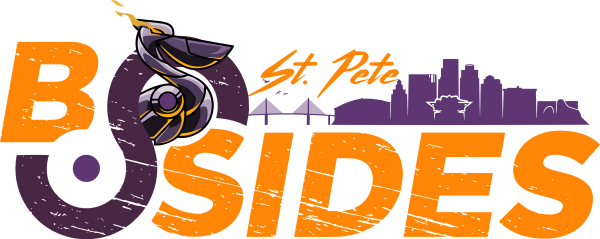
Friday is day 1 of BSides St. Pete, and it’s training day! Find out more and register here.
| Group | Event Name | Time |
|---|---|---|
| Defcon813 • Tampa, FL | BSides St. Pete | Fri, Sep 15 · 7:00 AM EDT |
| Winter Park Toastmasters – Learn while having FUN! • Winter Park, FL | Improve your communication, listening, and leadership skills | Fri, Sep 15 · 7:15 AM EDT |
| Entrepreneurs & Business Owners of Sarasota & Bradenton • Sarasota, FL | A.C.T. Acquire Connections Today Morning Business Networking All Welcome! | Fri, Sep 15 · 8:45 AM EDT |
| Young Professionals Networking JOIN in and Connect! • Saint Petersburg, FL | Tampa Young Professionals Virtual Networking Friday Morning All WElCOME | Fri, Sep 15 · 8:45 AM EDT |
| Tampa Bay Networking Meetings and Mixers • Tampa, FL | Business over Breakfast Clearwater | Fri, Sep 15 · 9:00 AM EDT |
| Tampa Bay Networking and Events • Largo, FL | Networking over breakfast | Fri, Sep 15 · 9:00 AM EDT |
| Professional Business Networking with RGAnetwork.net • Tampa, FL | FBI ~ Friday Business Introductions at Largo Family Restaurant | Fri, Sep 15 · 9:00 AM EDT |
| Tampa Bay UX Group • Tampa, FL | TBUX Lite: Virtual Coffee Talk | Fri, Sep 15 · 9:00 AM EDT |
| Brandon Biz Pros • Brandon, FL | Online Networking with Brandon Biz Pros | Fri, Sep 15 · 9:00 AM EDT |
| Project Codex • Orlando, FL | Virtual Coffee | Fri, Sep 15 · 9:00 AM EDT |
| Christian Professionals Network Tampa Bay • Largo, FL | Toastmasters – Improve Speaking Skills & Build Confidence | Fri, Sep 15 · 9:25 AM EDT |
| Ms. Biz Connectz- business leaders brainstorming together • Oviedo, FL | Ms. Biz Connectz- business leaders brainstorm together | Fri, Sep 15 · 10:00 AM EDT |
| Business Professionals of Pinellas, Pasco & Hillsborough • Largo, FL | International Networking at McAlisters Deli every Friday | Fri, Sep 15 · 11:30 AM EDT |
| Tampa Bay Networking and Events • Largo, FL | Westshore Business Networking Lunch at McAlisters Deli Every Friday All Welcome | Fri, Sep 15 · 11:30 AM EDT |
| Tampa Bay Networking Meetings and Mixers • Tampa, FL | Friday Business Introductions Tampa | Fri, Sep 15 · 11:30 AM EDT |
| Tampa / St Pete Business Connections • Tampa, FL | International Professionals Networking Meeting | Fri, Sep 15 · 11:30 AM EDT |
| Tampa Bay Business Networking Happy Hour/Meetings/Meet Up • Clearwater, FL | International Networking Westshore McAlisters Deli | Fri, Sep 15 · 11:30 AM EDT |
| Professional Business Networking with RGAnetwork.net • Tampa, FL | Friday International Business Introductions at McAlisters Westshore | Fri, Sep 15 · 11:30 AM EDT |
| Integrated Community of Professionals • Winter Haven, FL | Virtual coffee with like-minded professionals | Fri, Sep 15 · 12:00 PM EDT |
| Women Business Networking – Florida • Boca Grande, FL | Margarita Girls time – Networking with fun | Fri, Sep 15 · 4:00 PM EDT |
| Bitcoin Ben Crypto Club Meetup’s • Sarasota, FL | LNX SARASOTA | Fri, Sep 15 · 4:30 PM EDT |
| Happy Hour For Remote Workers (All Ages Welcome😊) • Saint Petersburg, FL | Happy Hour at Bayboro | Fri, Sep 15 · 4:30 PM EDT |
| Brandon Boardgamers • Brandon, FL | WEEKLY FRIDAY NIGHT GAMING AT GAMER’S COMMAND | Fri, Sep 15 · 5:00 PM EDT |
| Clermont Nerd Games • Clermont, FL | Board Game Night! | Fri, Sep 15 · 5:00 PM EDT |
| Meeple Movers Gaming Group • Ocala, FL | Board Game Night at Meeple Movers Cafe | Fri, Sep 15 · 5:00 PM EDT |
| Free Thinkers Dinner Club • Tampa, FL | Dinner and lively conversation at Maggiano’s Little Italy | Fri, Sep 15 · 5:00 PM EDT |
| Tampa Gaming Guild • Tampa, FL | Friday Board Game Night | Fri, Sep 15 · 5:30 PM EDT |
| Win a Job Fast • Tampa, FL | Job Search Acceleration Group (JSAG) Workshop | Fri, Sep 15 · 6:00 PM EDT |
| Board Games and Card Games in Sarasota & Bradenton • Sarasota, FL | Pizza and Board Games on Bee Ridge | Fri, Sep 15 · 6:00 PM EDT |
| Unlucky Roll Cafe Board Game Meetup • Inverness, FL | Friday Night Dice Throne | Fri, Sep 15 · 6:00 PM EDT |
| Critical Hit Games • Saint Petersburg, FL | MTG: Commander FNM | Fri, Sep 15 · 6:00 PM EDT |
| Tampa Japanese Meetup • Tampa, FL | Nihongo De Okay | Fri, Sep 15 · 6:00 PM EDT |
| Nerd Night Out • Tampa, FL | Taps & Drafts | Fri, Sep 15 · 6:00 PM EDT |
| Self-Perfected Orlando • Orlando, FL | GROWTH MINDSET | Fri, Sep 15 · 6:00 PM EDT |
| MakerFX Makerspace • Orlando, FL | MakerFX Makerspace Woodshop Guild | Fri, Sep 15 · 7:00 PM EDT |
| Oviedo Middle Aged Gamers (OMAG) • Oviedo, FL | Tabletop: Friday Board Game Night | Fri, Sep 15 · 7:00 PM EDT |
| Sarasota Books & Brews • Sarasota, FL | Book Discussion: The Covenant of Water | Fri, Sep 15 · 7:00 PM EDT |
| Sunshine Games • Tampa, FL | Friday Pokemon Tournament | Fri, Sep 15 · 7:30 PM EDT |
| Kava Culture Winter Springs • Winter Springs, FL | Trivia Night! | Fri, Sep 15 · 8:00 PM EDT |
| Indica Cafe Events • Tampa, FL | Friday night game night | Fri, Sep 15 · 9:00 PM EDT |
| Tampa Bay Business Networking Meetings & Mixers • Tampa, FL | International Networking at McAlisters Deli every Friday | Fri, Sep 15 · 11:30 PM EDT |
| Florida Center for Creative Photography • Saint Petersburg, FL | Monthly Cell Phone Photo Showcase | Fri, Sep 15 · 11:59 PM EDT |
| Return to the top of the list | ||
Saturday, September 16
Saturday is day 2 of BSides St. Pete, which is conference day! Find out more and register here.
| Group | Event Name | Time |
|---|---|---|
| Suncoast Drone Club • Tampa, FL | Alligator Lake Park | Sat, Sep 16 · 7:00 AM EDT |
| Central Florida Philosophy Meetup • Winter Park, FL | Wake Up and Think Clearly Saturday morning share and discuss. | Sat, Sep 16 · 7:00 AM EDT |
| Orlando Innovative Business Minds: Creative Strategy Meetup • Orlando, FL | Creative business minds & coffee | Sat, Sep 16 · 8:00 AM EDT |
| Toastmasters Division G • Ocala, FL | Early Bird Ocala | Sat, Sep 16 · 8:00 AM EDT |
| Tampa Hackerspace • Tampa, FL | Members Only: Make a Cutting Board 101 | Sat, Sep 16 · 9:00 AM EDT |
| Tampa Bay Bitcoin • Tampa, FL | Bitcoin Bay Beach Clean Up partnered with Keep Pinellas Beautiful | Sat, Sep 16 · 9:00 AM EDT |
| Bitcoin Ben Crypto Club Meetup’s • Sarasota, FL | Founders Event Sarasota | Sat, Sep 16 · 9:00 AM EDT |
| Organic and Sustainable Living Meetup • Orlando, FL | Free Classes – South Seminole Farm & Nursery – Casselberry | Sat, Sep 16 · 9:00 AM EDT |
| Toastmasters Division E • Orlando, FL | Hunters Creek Toastmasters | Sat, Sep 16 · 9:30 AM EDT |
| Chess Republic • Tampa, FL | Saturday Chess at Wholefoods in Midtown, Tampa | Sat, Sep 16 · 9:30 AM EDT |
| Critical Hit Games • Saint Petersburg, FL | Warhammer 40K: Rogue Trader Tournament (RTT/ITC) | Sat, Sep 16 · 10:00 AM EDT |
| Shut Up & Write!® Sarasota • Sarasota, FL | Shut Up & Write!® in Sarasota Coffee Shop | Sat, Sep 16 · 11:00 AM EDT |
| Midjourney A.I. Art Meetup Group • Tampa, FL | Midjourney Basics: Intro & FAQ with A.I. Creative Compass! | Sat, Sep 16 · 12:00 PM EDT |
| Florida Center for Creative Photography • Saint Petersburg, FL | JOIN our Facebook Group, LIKE our Fan Page and Invite your Friends | Sat, Sep 16 · 12:00 PM EDT |
| Suncoast Makers • Sarasota, FL | FREE Fab Lab Orientation | Sat, Sep 16 · 1:00 PM EDT |
| Orlando Amazon Sellers Meetup Group • Orlando, FL | How To Get Paid To Review Amazon Products – Amazon Influencer Program | Sat, Sep 16 · 1:00 PM EDT |
| Tampa Bay Women’s Book Club Meetup Group • Saint Petersburg, FL | September Book Club | Sat, Sep 16 · 1:00 PM EDT |
| Chan’s Book Club of Tampa Bay • Tampa, FL | Wine Down | Sat, Sep 16 · 1:00 PM EDT |
| Beast Mode Networking Orlando • Orlando, FL | GOAL SETTING WORKSHOP: Learn How To Create an Action Plan to Achieve Your Goals! | Sat, Sep 16 · 2:00 PM EDT |
| Tampa Book Club – Award-Winning Books • Tampa, FL | Demon Copperhead by Barbara Kingsolver – Winner of the Pulitzer Prize | Sat, Sep 16 · 3:00 PM EDT |
| Tampa Games Developer Guild • Tampa, FL | Game Project Therapy (Virtual) | Sat, Sep 16 · 4:00 PM EDT |
| Tampa Bay Web3 Frens • Tampa, FL | Pickleball 🏓🥎 then 🍻 | Sat, Sep 16 · 5:00 PM EDT |
| Meeple Movers Gaming Group • Ocala, FL | Board Game Night at Meeple Movers Cafe | Sat, Sep 16 · 5:00 PM EDT |
| Oviedo Middle Aged Gamers (OMAG) • Oviedo, FL | Golf Group – Star Wars: Force & Destiny & One-Shots | Sat, Sep 16 · 5:00 PM EDT |
| AI Tampa Elites • Tampa, FL | AI Art & ChatGPT Summit | Sat, Sep 16 · 6:00 PM EDT |
| Nerdbrew Events • Tampa, FL | Community Hang-out Night | Sat, Sep 16 · 6:00 PM EDT |
| Tampa Hackerspace • Tampa, FL | Tampa Hackerspace Board Game Night and Potluck | Sat, Sep 16 · 6:30 PM EDT |
| Sunshine Games • Tampa, FL | Yu-Gi-Oh Evening Tournament | Sat, Sep 16 · 7:00 PM EDT |
| Balance Martial Arts and Gaming • Pinellas Park, FL | Yu-Gi-Oh Tournament | Sat, Sep 16 · 7:00 PM EDT |
| Black Entrepreneurs who Love Great Music & Networking • Tampa, FL | Spade Dating @ Riverview TapHouse | Sat, Sep 16 · 9:00 PM EDT |
| Nerd Night Out • Tampa, FL | KARAOKE NIGHT! | Sat, Sep 16 · 9:00 PM EDT |
| Return to the top of the list | ||
Sunday, September 17
| Group | Event Name | Time |
|---|---|---|
| Dunedin Professional Meetup • Clearwater, FL | Wild Iris Cafe Breakfast Meet! | Sun, Sep 17 · 8:00 AM EDT |
| Suncoast Drone Club • Tampa, FL | Safety Harbor Waterfront Park | Sun, Sep 17 · 9:00 AM EDT |
| The Art Of Photography – Tampa/St. Pete Chapter • Tampa, FL | Sun 9/17 at 10 AM ONLINE PHOTOGRAPHY CRITIQUE PROGRAM | Sun, Sep 17 · 10:00 AM EDT |
| Suncoast Critical Thinking Discussion Group • Sarasota, FL | Dangerous Wishcraft! Religion & Mental Health Brunch | Sun, Sep 17 · 10:05 AM EDT |
| Simply Referrals Tampa Business Networking • Tampa, FL | Simply Sunday Morning :) What are you drinking? reading? & listening to? | Sun, Sep 17 · 10:30 AM EDT |
| Clermont Nerd Games • Clermont, FL | Warhammer 40K | Sun, Sep 17 · 11:00 AM EDT |
| Saint Cloud Social Group • Saint Cloud, FL | Philosophical Café | Sun, Sep 17 · 11:00 AM EDT |
| Makerspaces Pinellas Meetup Group • Largo, FL | Large format printing | Sun, Sep 17 · 12:00 PM EDT |
| Sunshine Social Deduction Gaming • Orlando, FL | Blood on the Clocktower at The Collective | Sun, Sep 17 · 12:00 PM EDT |
| Tampa Gaming Guild • Tampa, FL | Sunday Gaming | Sun, Sep 17 · 1:00 PM EDT |
| Drunk’n Meeples West Pasco (Boardgames) • Port Richey, FL | Weekend Game Day | Sun, Sep 17 · 1:00 PM EDT |
| Tampa Bay Gaming: RPG’s, Board Games & more! • Tampa, FL | D&D Adventurers League at Critical Hit Games | Sun, Sep 17 · 2:00 PM EDT |
| Chess Republic • Tampa, FL | Sunday Chess at Grassroots Kava House in Ybor | Sun, Sep 17 · 2:00 PM EDT |
| Critical Hit Games • Saint Petersburg, FL | D&D Adventurers League | Sun, Sep 17 · 2:00 PM EDT |
| Toastmasters, Division D • Altamonte Springs, FL | Weekend Toastmasters | Sun, Sep 17 · 3:00 PM EDT |
| Sunshine Games • Tampa, FL | Sunday Pokemon League | Sun, Sep 17 · 4:00 PM EDT |
| Orlando Adventurer’s Guild • Orlando, FL | (In-Person) July Session Zero: Creating a Character: Special Edition | Sun, Sep 17 · 5:00 PM EDT |
| Tampa Hackerspace • Tampa, FL | Sew Awesome! (Textile Arts & Crafts) | Sun, Sep 17 · 5:30 PM EDT |
| Brandon and Seffner area AD&D and OSR Group • Seffner, FL | Lankhmar: City of Adventure | Sun, Sep 17 · 5:30 PM EDT |
| Nerdbrew Events • Tampa, FL | Hidden Gems Night, Presented by A Duck! | Sun, Sep 17 · 7:00 PM EDT |
| Unlucky Roll Cafe Board Game Meetup • Inverness, FL | Open Game Night | Sun, Sep 17 · 7:00 PM EDT |
| Nerd Night Out • Tampa, FL | A Duck Presents NB Movie Night | Sun, Sep 17 · 7:00 PM EDT |
| Solana – Tampa • Tampa, FL | Office Hours | Sun, Sep 17 · 8:00 PM EDT |
| Nerd Night Out • Tampa, FL | NerdBrew Karaoke @ MacDinton’s! | Sun, Sep 17 · 8:00 PM EDT |
| Return to the top of the list | ||
About this list
How do I put this list together? It’s largely automated. I have a collection of Python scripts in a Jupyter Notebook that scrape Meetup and Eventbrite for events in categories that I consider to be “tech,” “entrepreneur,” and “nerd.” The result is a checklist that I review. I make judgement calls and uncheck any items that I don’t think fit on this list.
In addition to events that my scripts find, I also manually add events when their organizers contact me with their details.
What goes into this list? I prefer to cast a wide net, so the list includes events that would be of interest to techies, nerds, and entrepreneurs. It includes (but isn’t limited to) events that fall under any of these categories:
- Programming, DevOps, systems administration, and testing
- Tech project management / agile processes
- Video, board, and role-playing games
- Book, philosophy, and discussion clubs
- Tech, business, and entrepreneur networking events
- Toastmasters (because nerds really need to up their presentation game)
- Sci-fi, fantasy, and other genre fandoms
- Self-improvement, especially of the sort that appeals to techies
- Anything I deem geeky

they’re also a great, developer-friendly cloud-native service provider!
Find out more.
